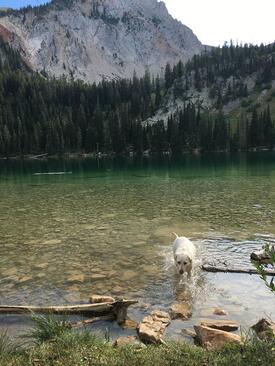
It’s that time of year. Summer has officially arrived and if your dog is like mine, she can’t get enough of the lakes
and streams this time of year. Every year over the warm summer months we see dogs coming into the clinic for ‘smelly wet dog’ syndrome. Allow me to explain.
Dogs, just like people, carry bacteria and yeast on their skin at all times. These organisms are kept in check by the dog’s immune system when the dog is healthy. The skin has natural barriers in place to help keep the bacteria and yeast in check. When dogs get wet the skin surface softens and those barriers get broken down. Typically this only becomes an issue when the skin is wet for an extended period of time. Because dogs have so much fur they tend to trap and hold water on the underside of the body, the armpits, the groin, under the ears or collar. When these areas remain wet for too long, those natural barriers get broken down and the bacteria are allowed to invade and cause infection. This can range from a few small bumps to severe deep (and painful!) infections. Often the first thing people notice is their dog seems to smell more. With the feet, because they tend to have more yeast, people will notice a more yeasty smell that some people equate to the smell of corn chips.
Ok, so what do we do to keep them healthy? First of all regular bathing with a mild shampoo is a good idea. This helps remove the ‘funk’ of some bodies of water. Sometimes rinsing is enough to help keep them comfortable. Be careful of bathing your dog too often as the shampoos can strip the natural oils of the fur and dry out the skin making them more susceptible to infection. Make sure after swimming, your dog is allowed to thoroughly dry. You can towel them down or some dogs will tolerate a fan. At home I towel my dog off then put a dry towel on her dog bed for her to lay on for a few hours. I also recommend removing collars to allow the neck to dry out better.
Some dogs are more prone to ear infections and swimming can make it easier for those to get started. If you are concerned about the ears, or they are starting to smell, it’s a good idea to rinse the ears with an ear cleaning solution. The purpose of ear cleaner is twofold; first, it helps to remove wax and debris from the deep canal, but secondarily these often contain a drying agent to help displace water and encourage the ear canal to dry thoroughly.
Should you discover infection or discharge we recommend you seek medical care for your dog. Most dogs with skin or ear infections will require antibiotics and some of the more severe infections can be quite painful. Please consult your veterinarian should you have any questions or concerns.
As ever, have a wonderful summer, enjoy the outdoors and happy swimming!
and streams this time of year. Every year over the warm summer months we see dogs coming into the clinic for ‘smelly wet dog’ syndrome. Allow me to explain.
Dogs, just like people, carry bacteria and yeast on their skin at all times. These organisms are kept in check by the dog’s immune system when the dog is healthy. The skin has natural barriers in place to help keep the bacteria and yeast in check. When dogs get wet the skin surface softens and those barriers get broken down. Typically this only becomes an issue when the skin is wet for an extended period of time. Because dogs have so much fur they tend to trap and hold water on the underside of the body, the armpits, the groin, under the ears or collar. When these areas remain wet for too long, those natural barriers get broken down and the bacteria are allowed to invade and cause infection. This can range from a few small bumps to severe deep (and painful!) infections. Often the first thing people notice is their dog seems to smell more. With the feet, because they tend to have more yeast, people will notice a more yeasty smell that some people equate to the smell of corn chips.
Ok, so what do we do to keep them healthy? First of all regular bathing with a mild shampoo is a good idea. This helps remove the ‘funk’ of some bodies of water. Sometimes rinsing is enough to help keep them comfortable. Be careful of bathing your dog too often as the shampoos can strip the natural oils of the fur and dry out the skin making them more susceptible to infection. Make sure after swimming, your dog is allowed to thoroughly dry. You can towel them down or some dogs will tolerate a fan. At home I towel my dog off then put a dry towel on her dog bed for her to lay on for a few hours. I also recommend removing collars to allow the neck to dry out better.
Some dogs are more prone to ear infections and swimming can make it easier for those to get started. If you are concerned about the ears, or they are starting to smell, it’s a good idea to rinse the ears with an ear cleaning solution. The purpose of ear cleaner is twofold; first, it helps to remove wax and debris from the deep canal, but secondarily these often contain a drying agent to help displace water and encourage the ear canal to dry thoroughly.
Should you discover infection or discharge we recommend you seek medical care for your dog. Most dogs with skin or ear infections will require antibiotics and some of the more severe infections can be quite painful. Please consult your veterinarian should you have any questions or concerns.
As ever, have a wonderful summer, enjoy the outdoors and happy swimming!
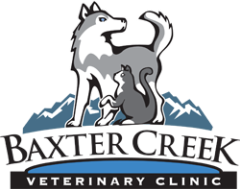
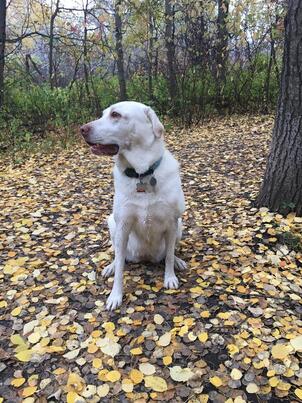
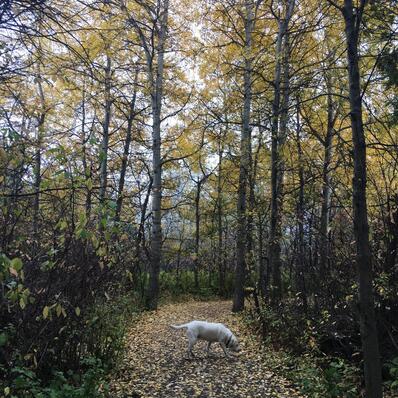
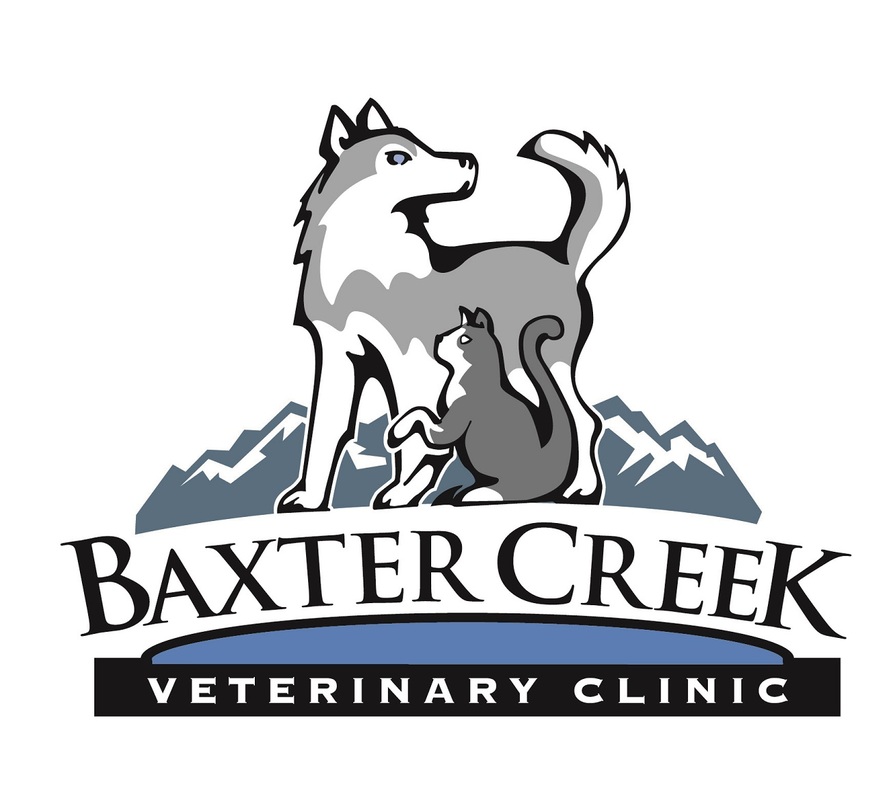
 RSS Feed
RSS Feed



